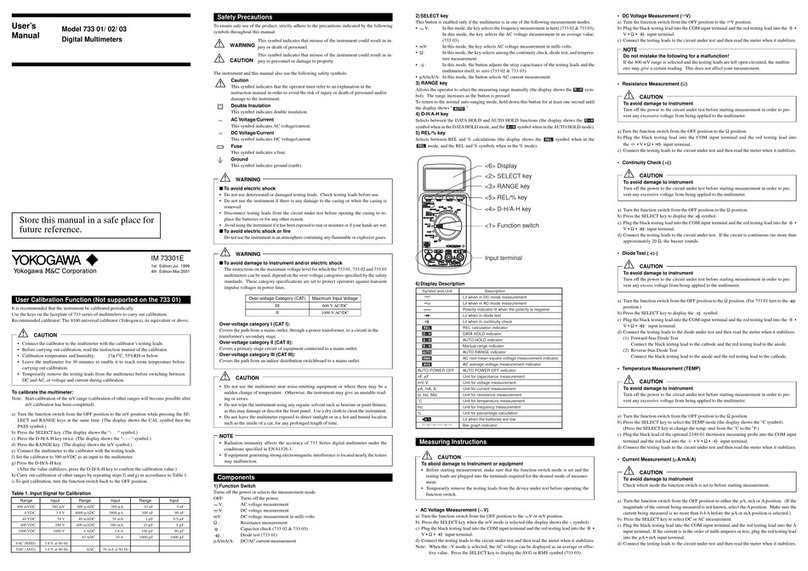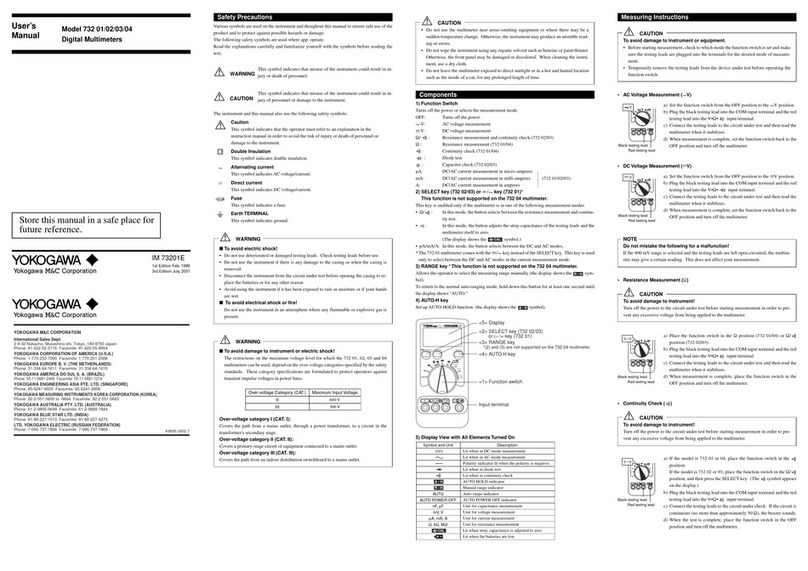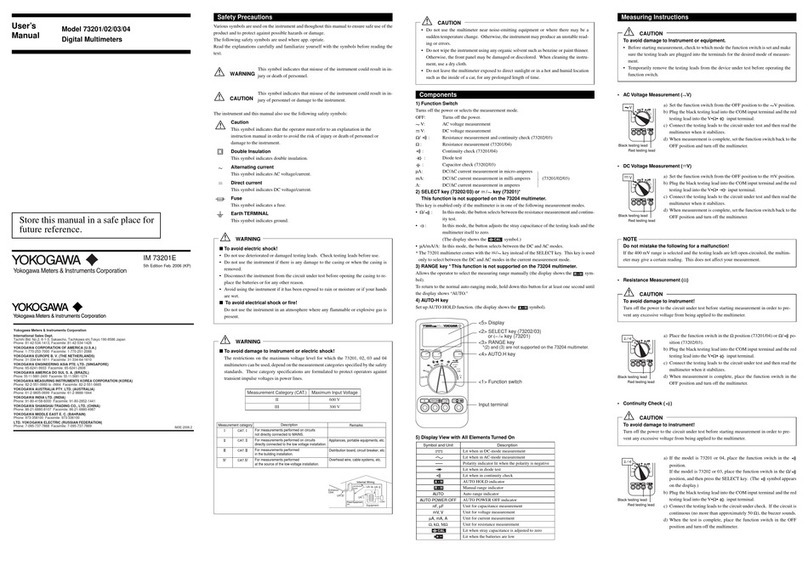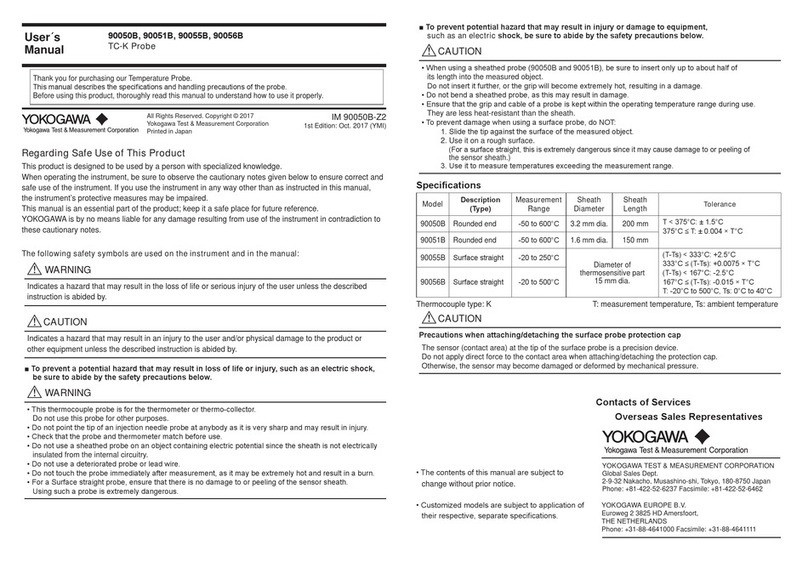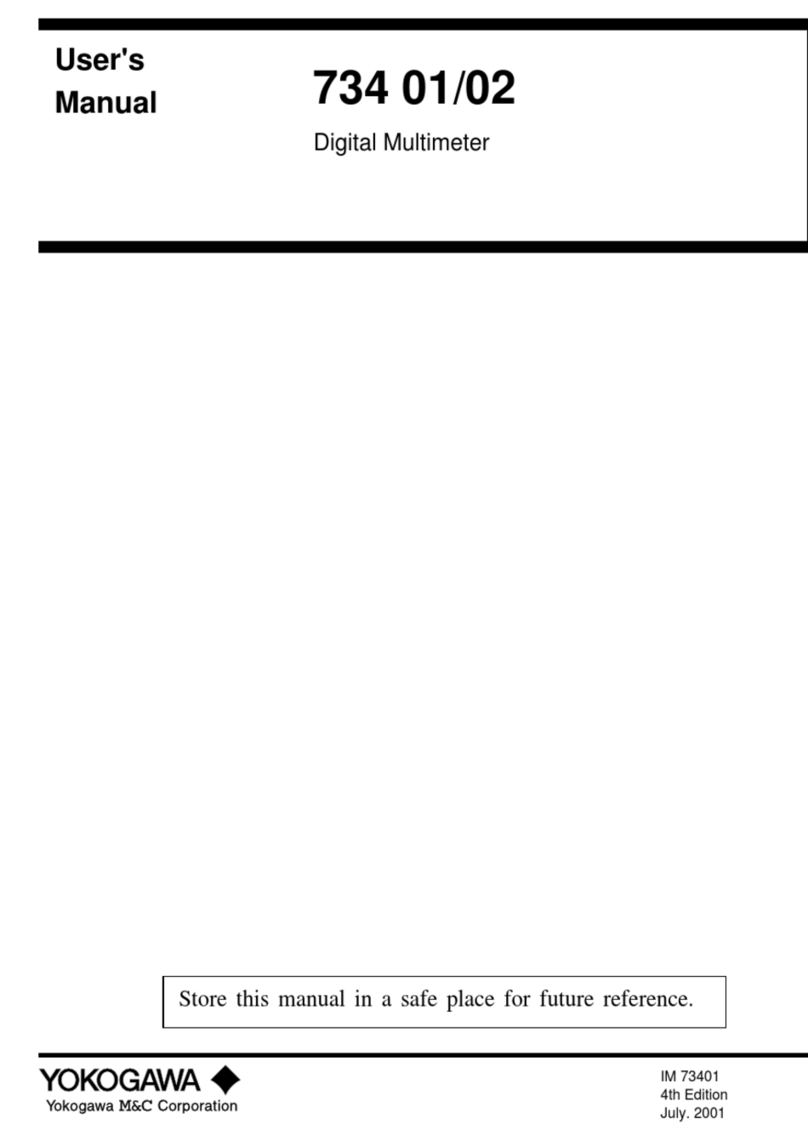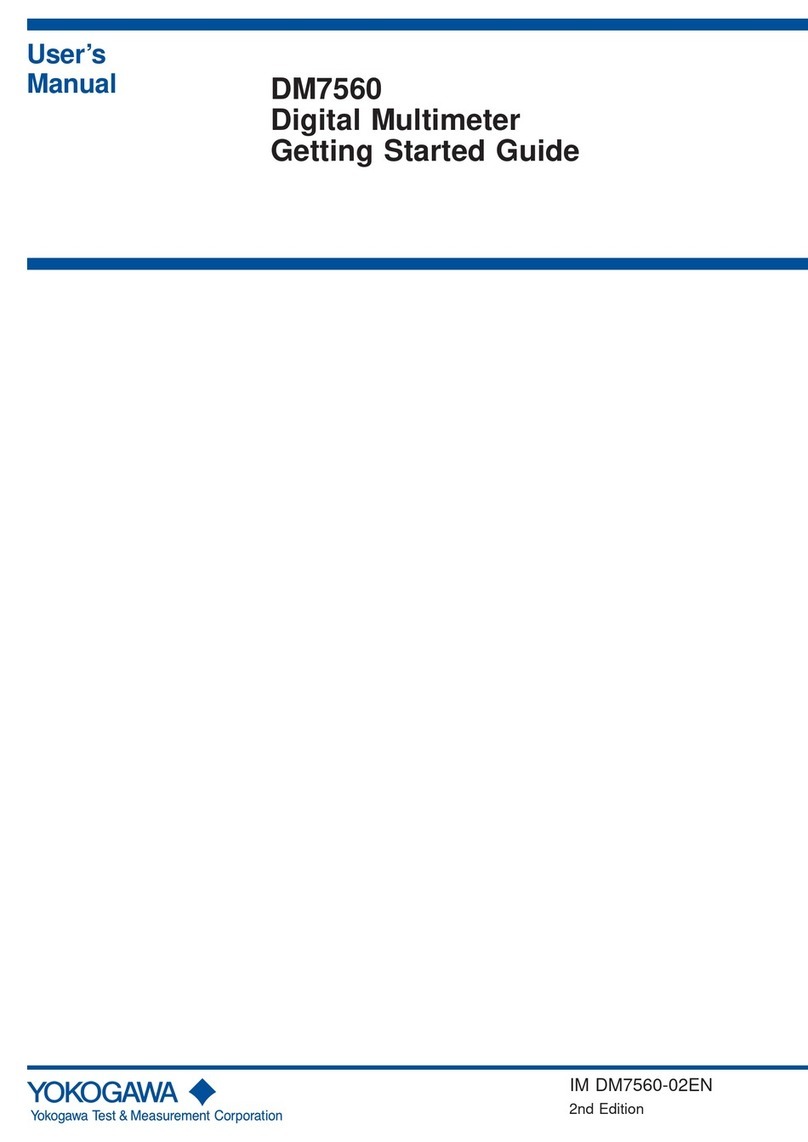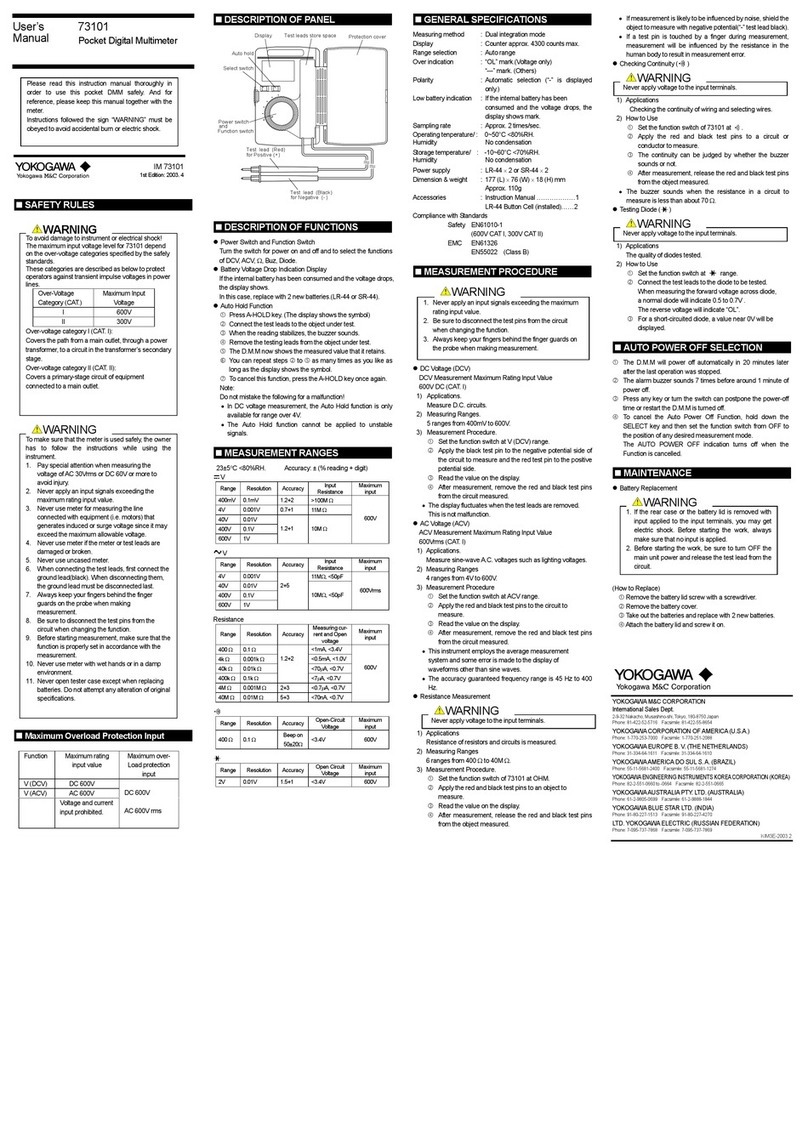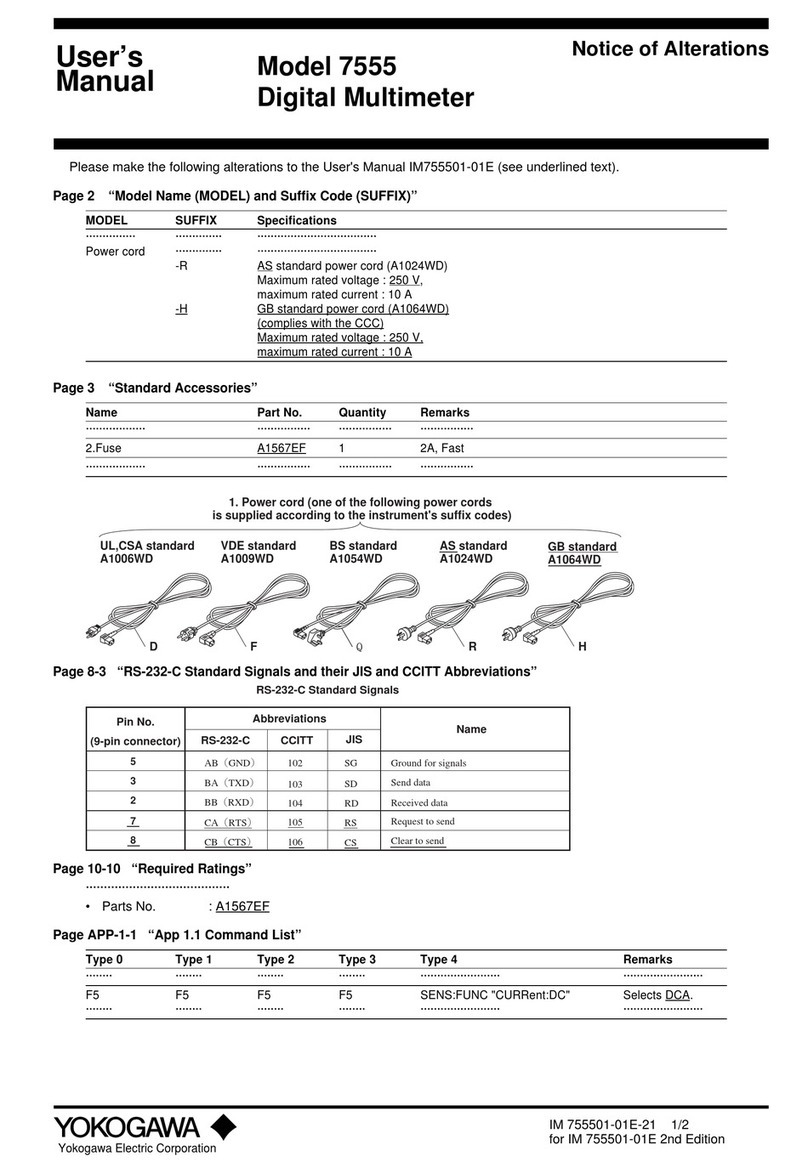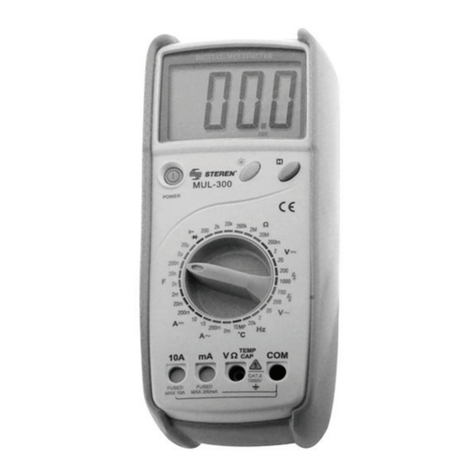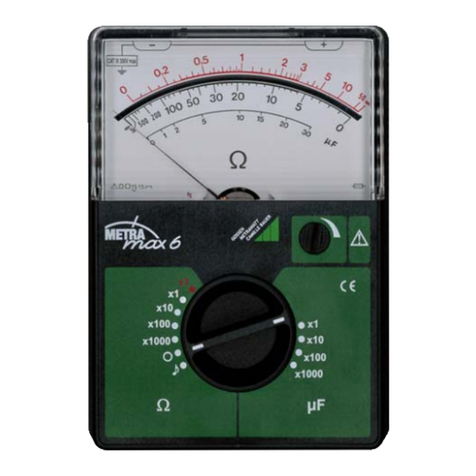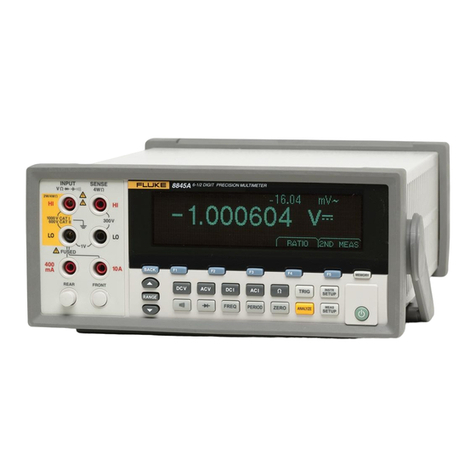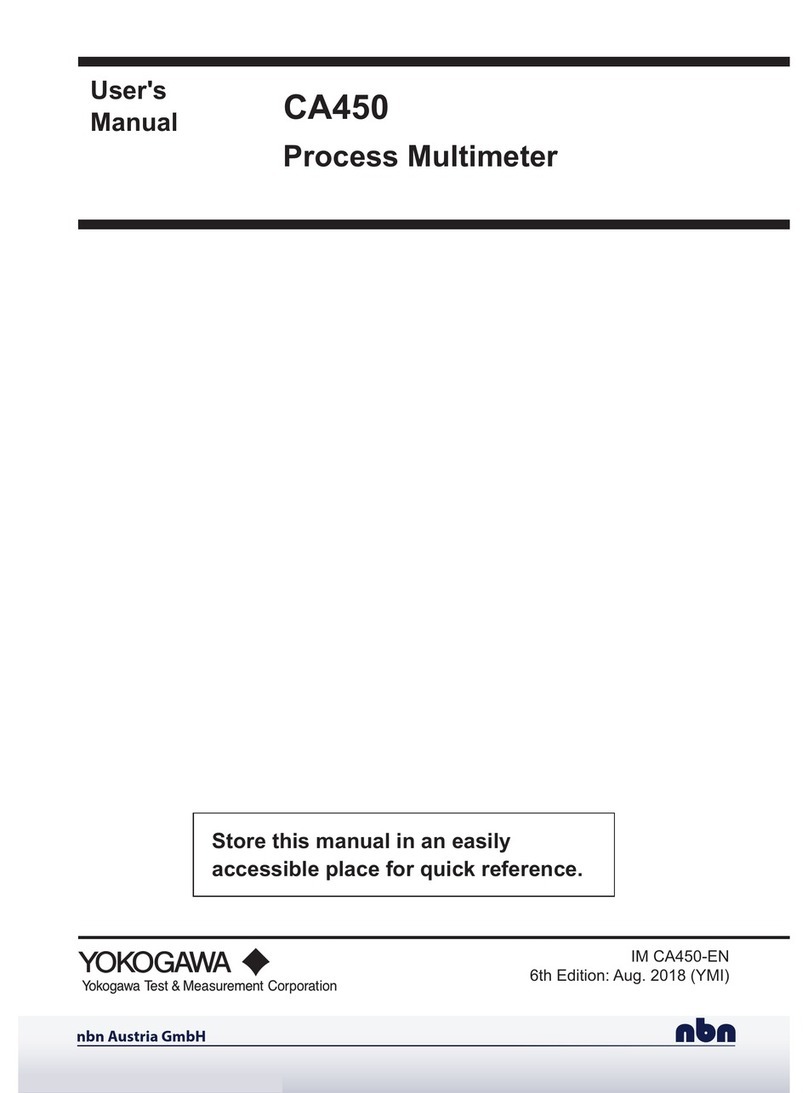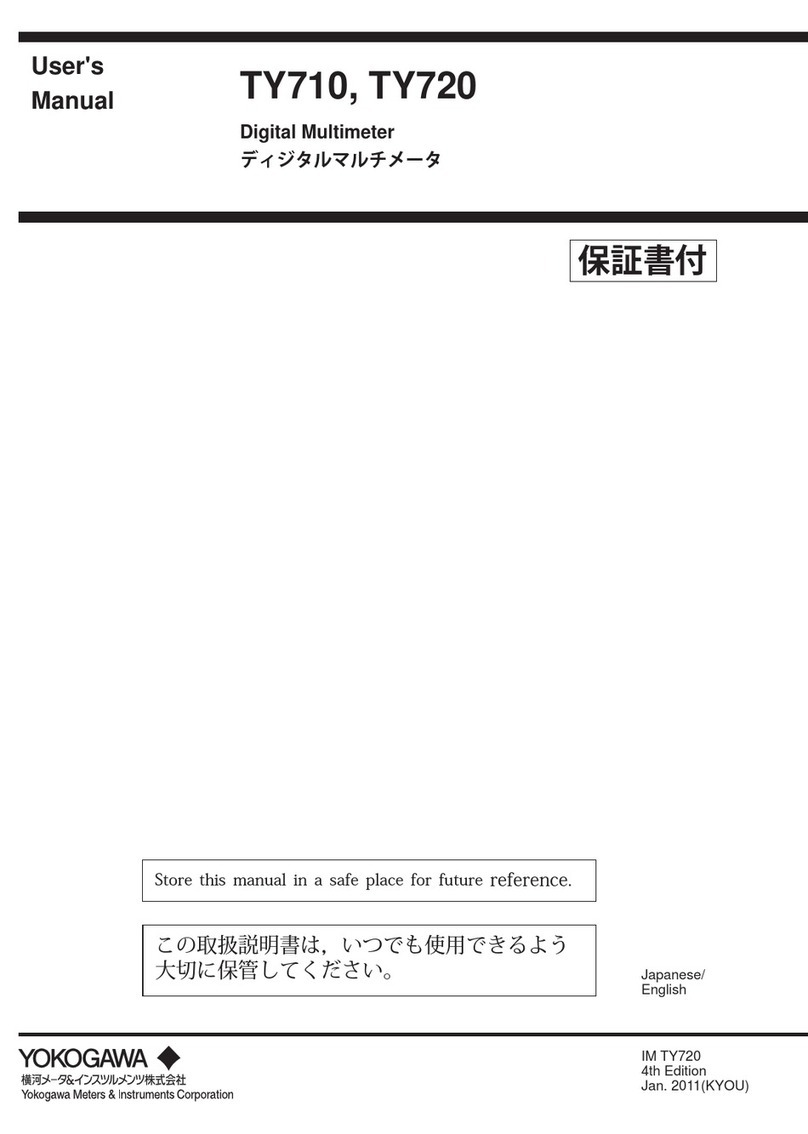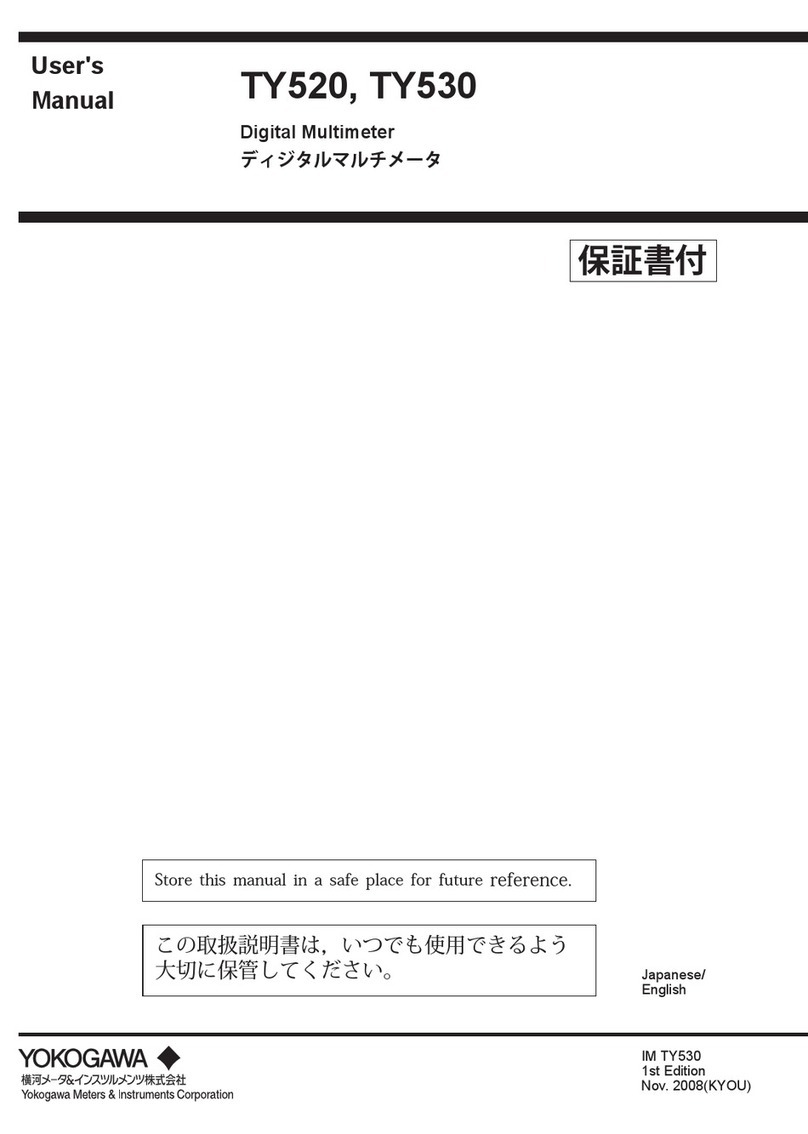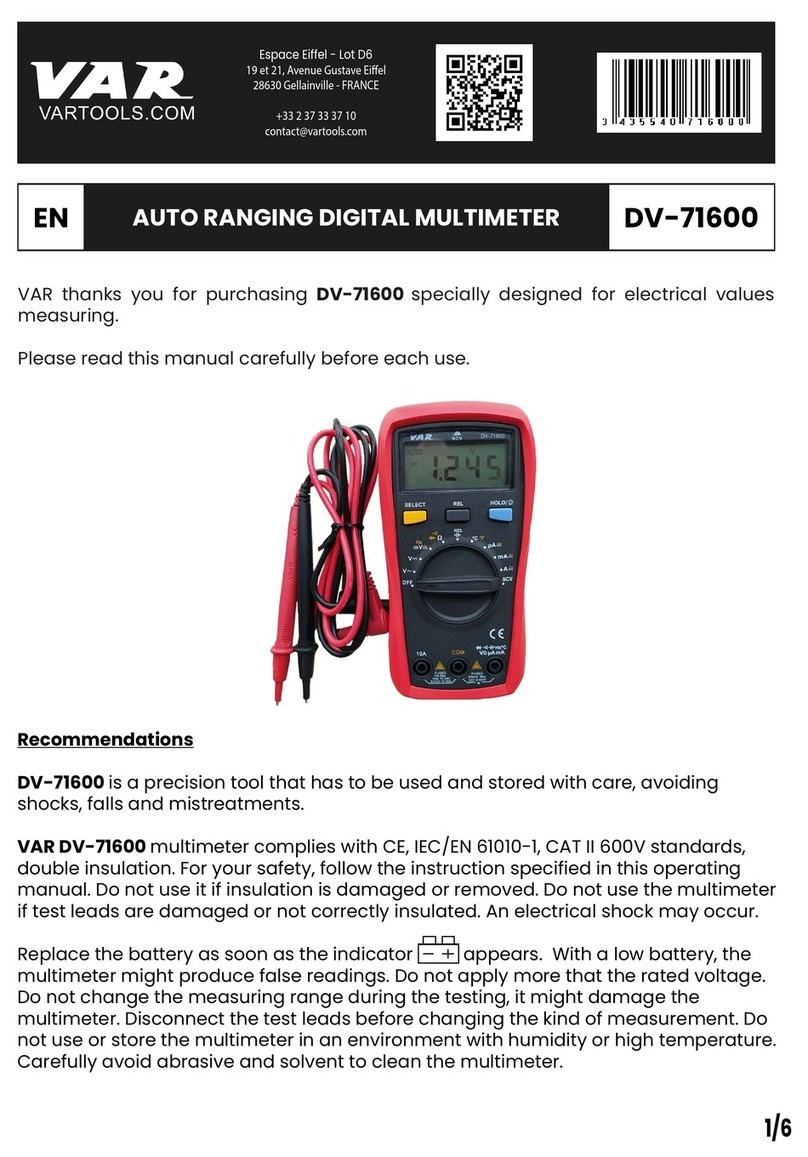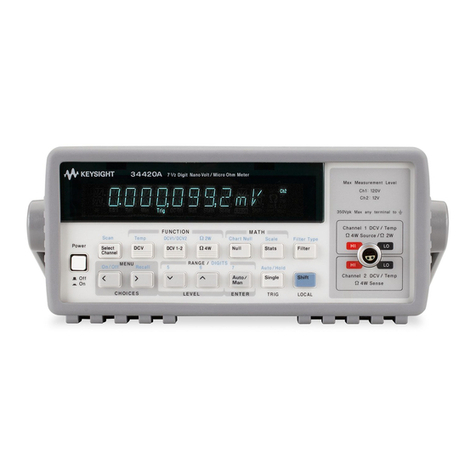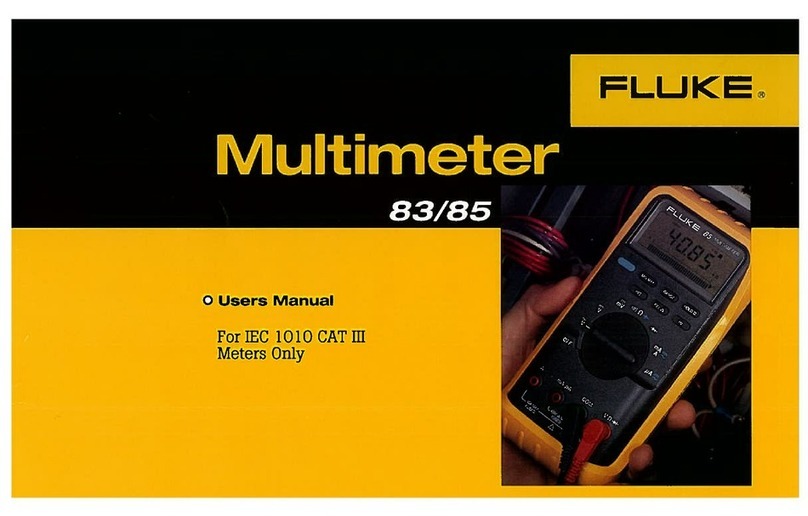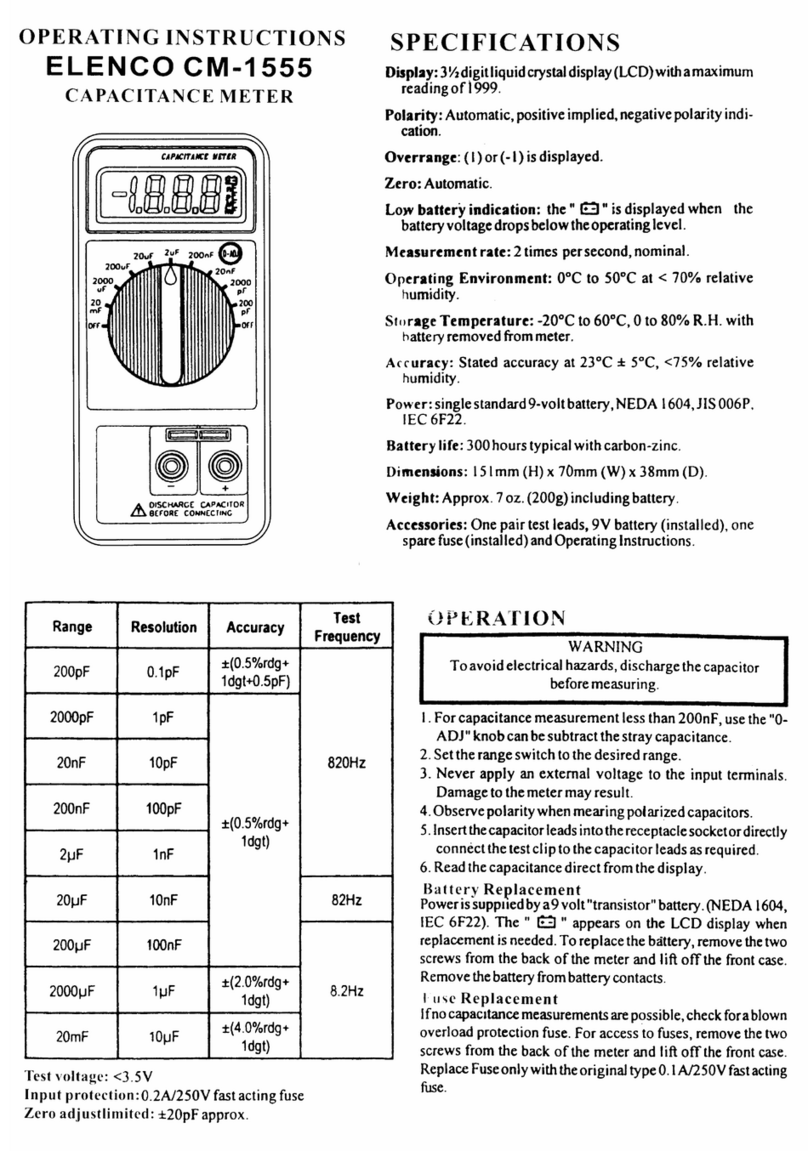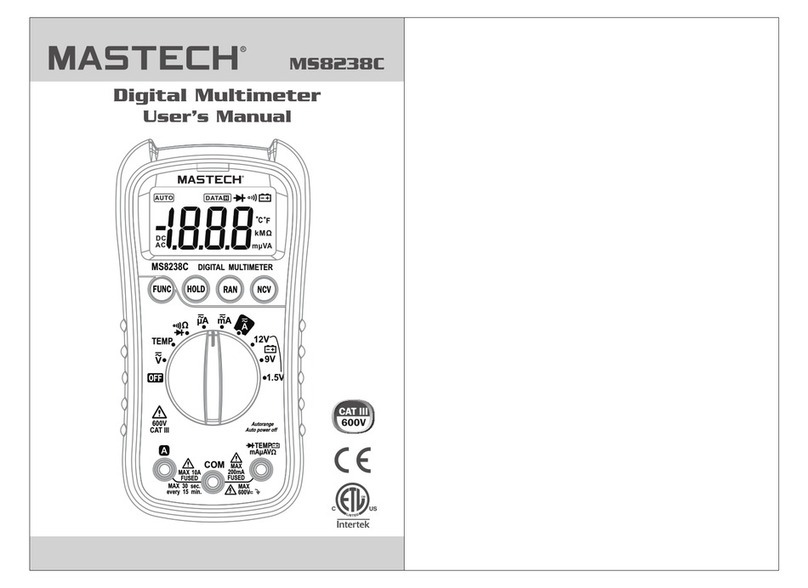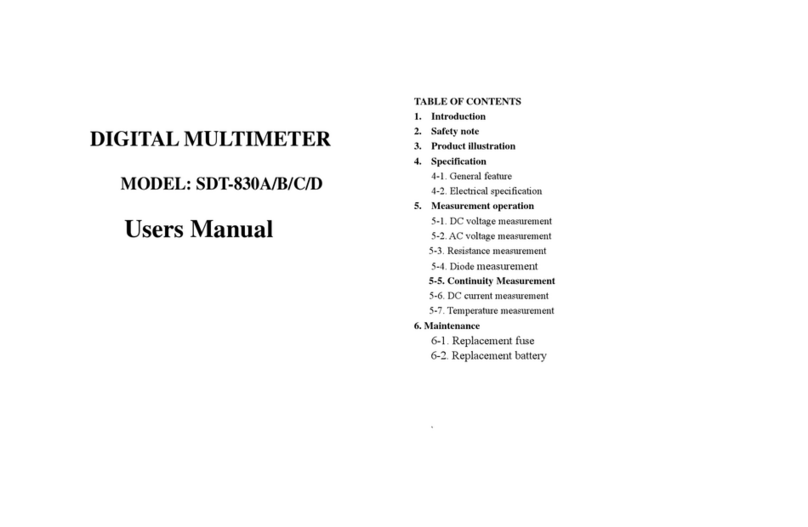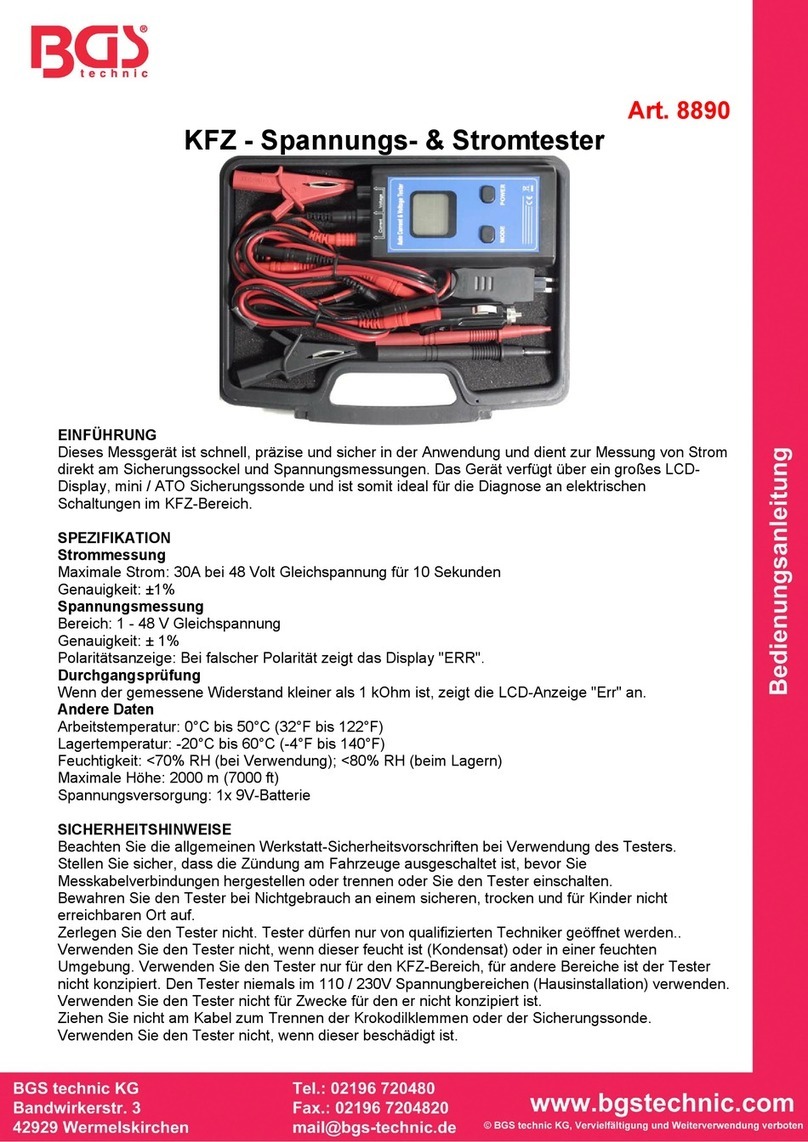
3
Contents
Regarding the Safe Use of This Product.......................1
1. Checking the Contents of the Package ....................4
2. Measurement Category ................................4
3. Components.........................................5
4. Display (LCD)........................................6
5. Power ON/OFF and Auto power off .......................6
6. Cursor/ENTER key....................................6
7. Making Basic Measurements ............................7
7.1 Measuring Voltage ...............................7
7.2 Measuring Current ...............................7
8. Others Function ......................................8
8.1 AUTO SENSE...................................8
8.2 RANGE ........................................8
8.3 Peak Hold (AC mode only) .........................9
8.4 Inrush current (AC mode only) .....................11
8.5 DCA ZERO ....................................12
8.6 Measuring Frequency Hz (AC mode only) ............12
8.7 MAX/MIN......................................13
8.8 Harmonic Measurement (AC mode only) .............13
8.8.1 THD Measurement..........................13
8.8.2 Individual Harmonic Mesurement ..............14
8.9 Low pass filter (AC mode only).....................14
8.10 Measuring Active Power ..........................15
8.10.1 Single phase 2 wire .........................15
8.10.2 3 phase 3 wire (balanced/unbalanced) ..........16
8.10.3 3 phase 4 wire (balanced/unbalanced) ..........16
8.10.4 Phase Rotation.............................17
8.11 Mesuring Resistance.............................19
8.11.1 Resistance (Ω) .............................19
8.11.2 Continuity Check ...........................20
8.11.3 Diode Test.................................20
8.12 HOLD ........................................20
8.13 Voltage Sanse..................................20
8.14 Buzzer........................................21
8.15 Additional Power-on Function......................21
9. Battery State display and Battery Replacement .............21
9.1 Battery State display .............................21
9.2 Bayttery Replacement............................21
10. Specifications .......................................22
10.1 General Specifications ...........................22
10.2 Accuracy ......................................23
11. Maintenance and After-Sales Service ....................26
12. Sales in Each Country or Region ........................26
12.1 Disposing the Product............................26
12.2 How to Replace and Dispose the Batteries............26
12.3 Authorized Representative in the EEA ...............26
12.4 For the Pollution Control of Electronic and
Electrical Products of the People's Republic of China ...27
Disk No. CW10
5th Edition: April 2015
All Rights Reserved, Copyright ©2011,
Yokogawa Meters & Instruments Corporation
Printed in Taiwan

